Project Scope
1. Vision & Objective
This project aimed to deeply understand the culture and experience of Yoga in stand-alone studios using contextual research, ethnographic methods, and design thinking. By analyzing how students, instructors, and studio owners engage with Yoga spaces, we sought to identify key insights and opportunities for improving business strategy, customer experience, and operational efficiency.
The study specifically focused on Vinyasa Yoga, a style that emphasizes the synchronization of breath and movement, providing a unique, immersive experience for practitioners. Our research spanned ten weeks and examined how environment, teaching methods, and community influence the overall Yoga experience.
2. Business Opportunity
For Yoga studio owners, instructors, and students, this study provides:
• Insights into customer behaviors, preferences, and engagement.
• Opportunities to optimize studio facilities and services to enhance retention and growth.
• Data-driven strategies to refine business models for higher profitability and expansion.
Unlike traditional focus-group-driven marketing approaches, this research applied design thinking to holistically analyze the cultural and emotional impact of Yoga practice in private studio settings.
Challenge
Despite the increasing popularity of Yoga, stand-alone studios face several challenges:
• Member Retention Issues: Many students start Yoga but fail to maintain a long-term commitment, impacting studio revenue.
• Physical & Emotional Environment: The studio space, ambiance, and instructor interactions play a significant role in the Yoga experience but often lack optimization.
• Limited Business Growth Strategies: Owners focus on the practice of Yoga but may lack data-driven insight on how to enhance customer engagement and operational efficiency.
• Understanding Consumer Motivation: The diverse reasons why individuals practice Yoga—whether for physical health, mindfulness, or community—are often underestimated in marketing and service strategies.
This study aimed to uncover patterns in customer engagement, pain points, and opportunities to enhance Yoga studios as both a business and a community space.
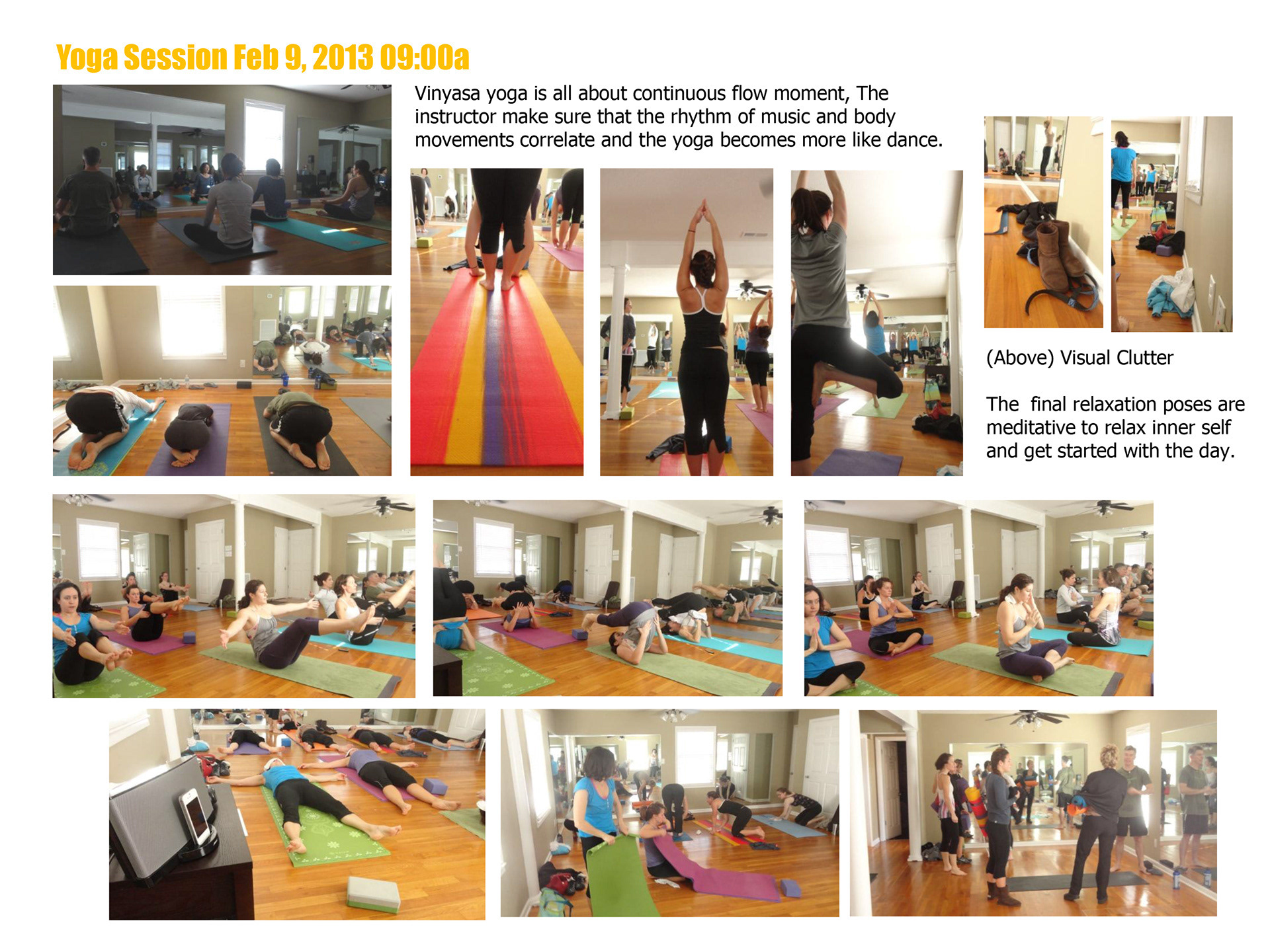
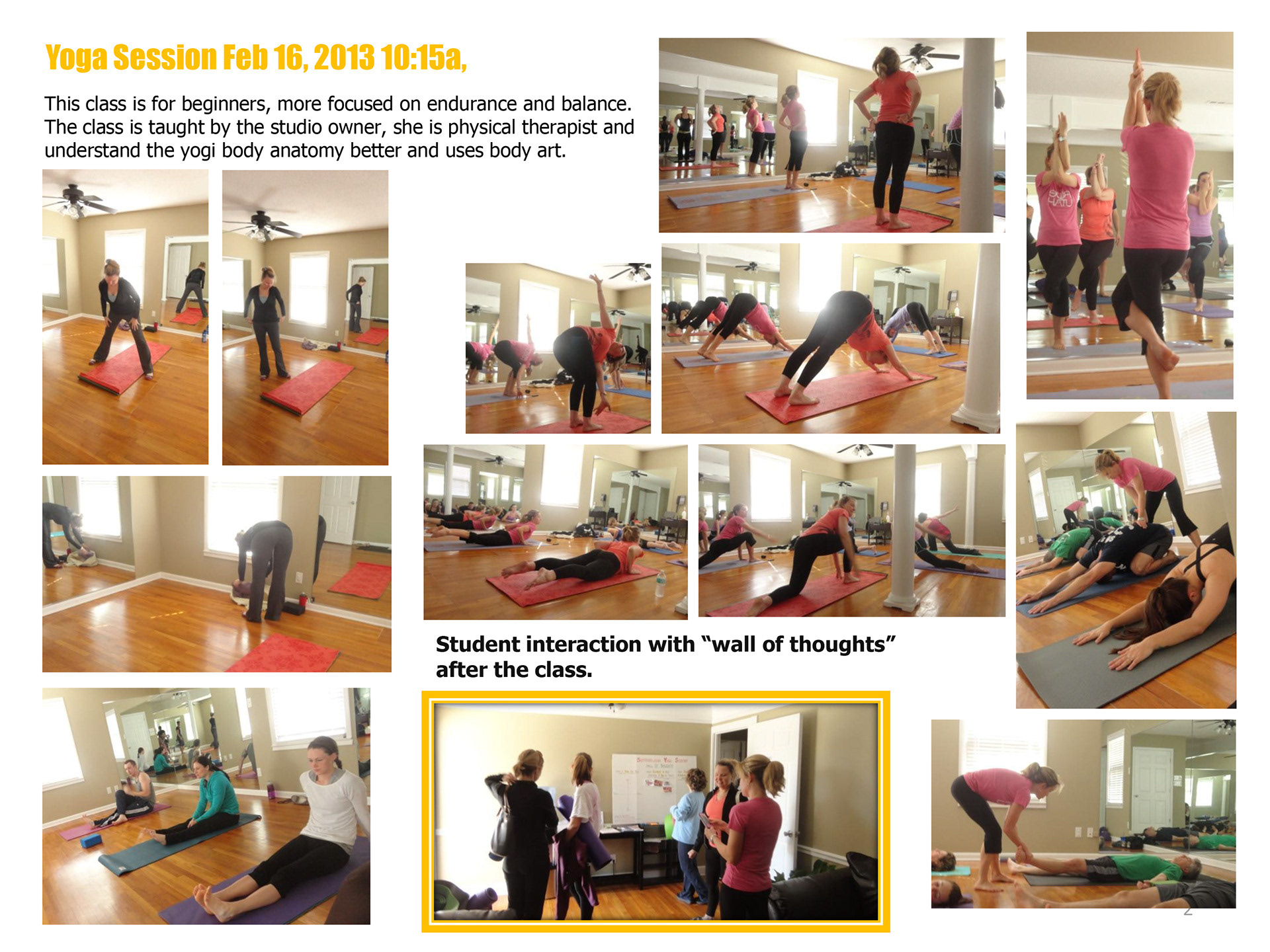
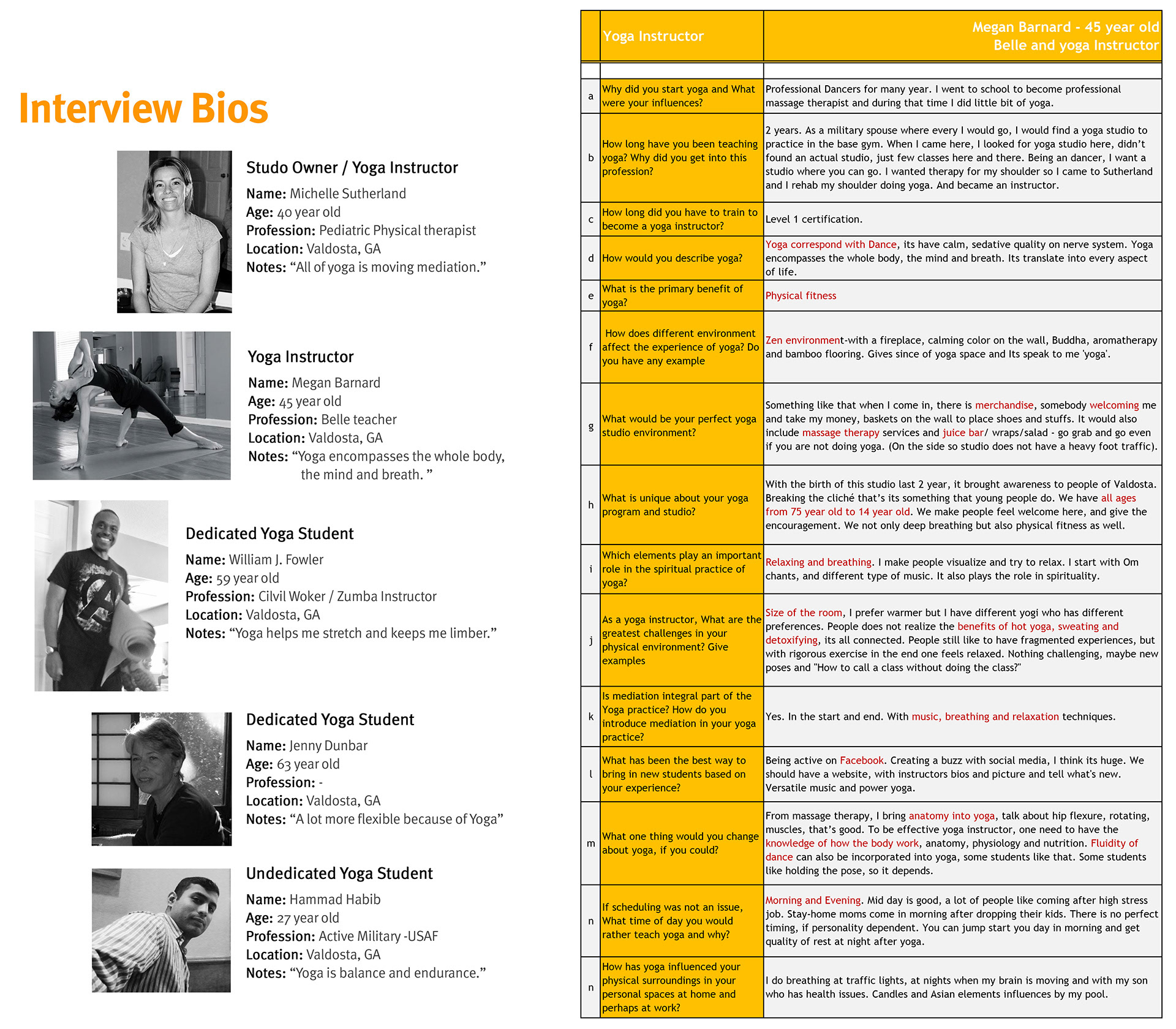
Research & Design Approach
The methodology combined ethnographic research, direct observation, and qualitative data analysis to map user experiences and business opportunities.
1. Contextual Research & User Behavior Analysis
✔ Observation: Passive and active observing student-instructor interactions, emotional changes, and spatial engagement.
✔ Interviews: Conducted with students, instructors, and studio owners to understand their perspectives on the Yoga experience, business challenges, and expectations.
✔ Wall of Thoughts: A participatory research method that allowed Yogis to express their values, motivations, and feelings toward Yoga.
2. Business & Experience Modeling
✔ Position Map: Mapped where Yoga studios stand in the wellness industry relative to competitors.
✔ User Journey Map: Traced Yogis's emotional and behavioral journey from entry to membership retention.
✔ Spider Map & Venn Diagram: Visualized pain points, motivations, and overlaps in the Yoga experience.
✔ Word Cloud Analysis: Captured the most frequently used words and themes related to the Yoga practice.
3. Identifying Business & Product Opportunities
✔ Experience-Driven Studio Enhancements: Improving studio ambiance, class structures, and community engagement.
✔ Personalized Member Journeys: Offering customized programs to cater to different goals (fitness, mindfulness, flexibility, etc.).
✔ Loyalty & Membership Growth Strategies: Creating subscription-based models and engagement rewards.

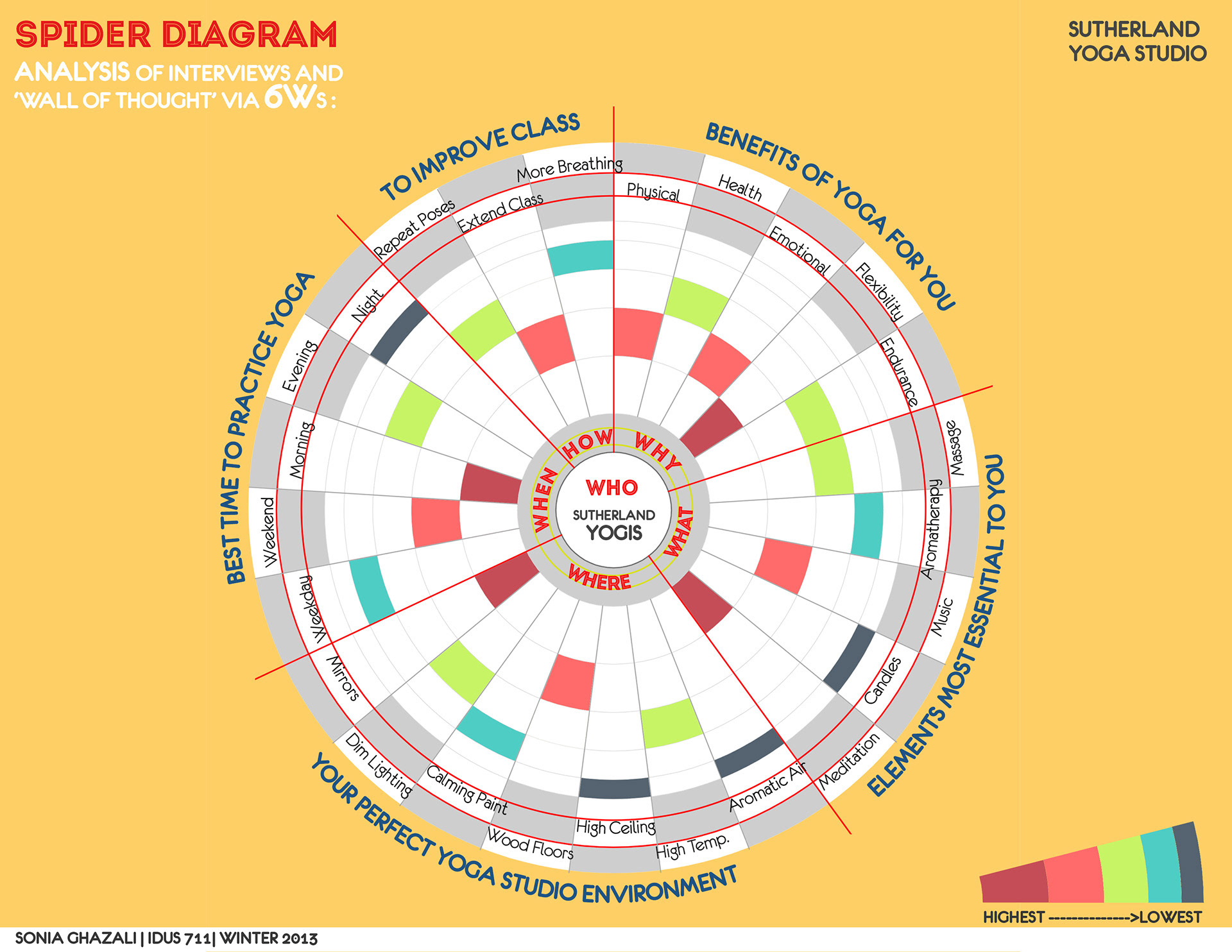
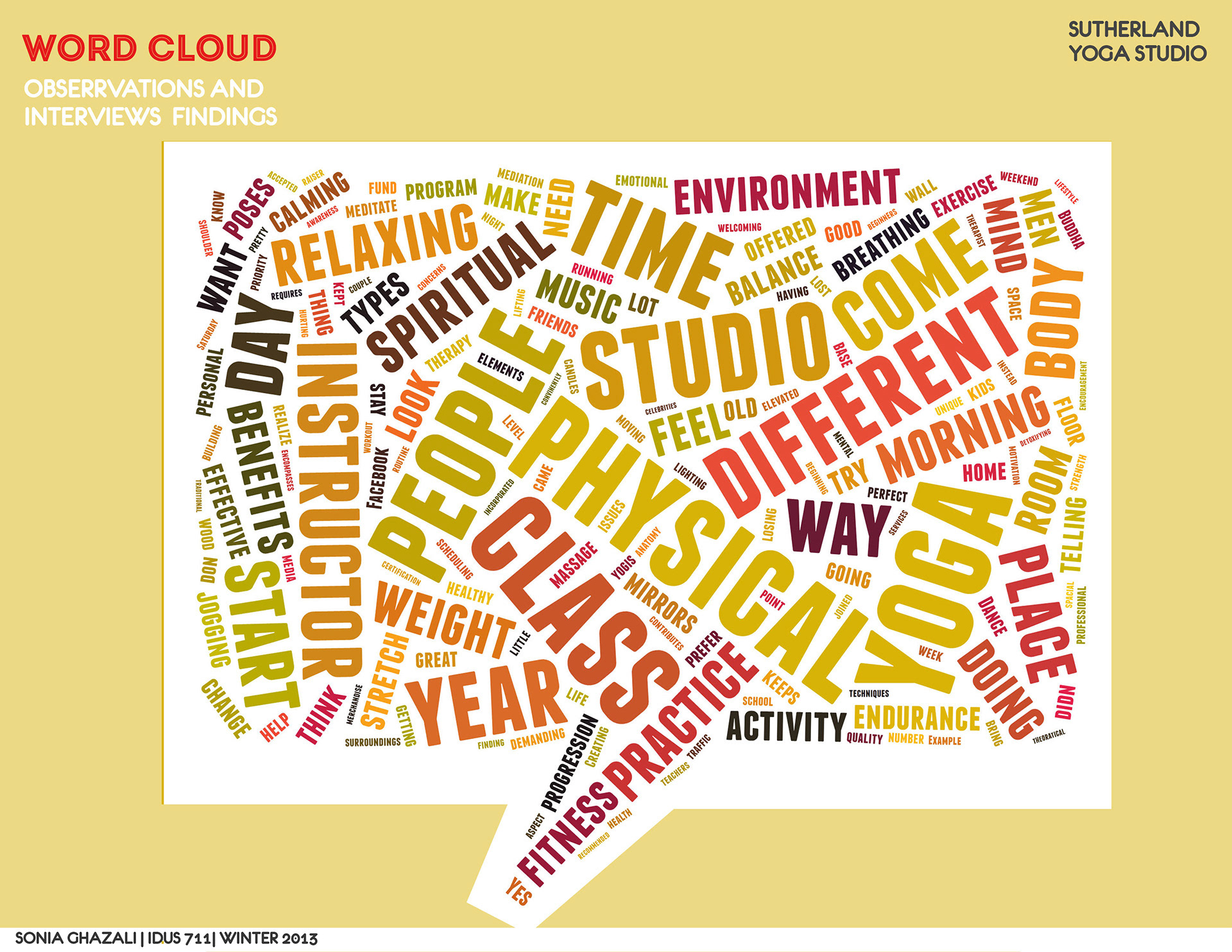
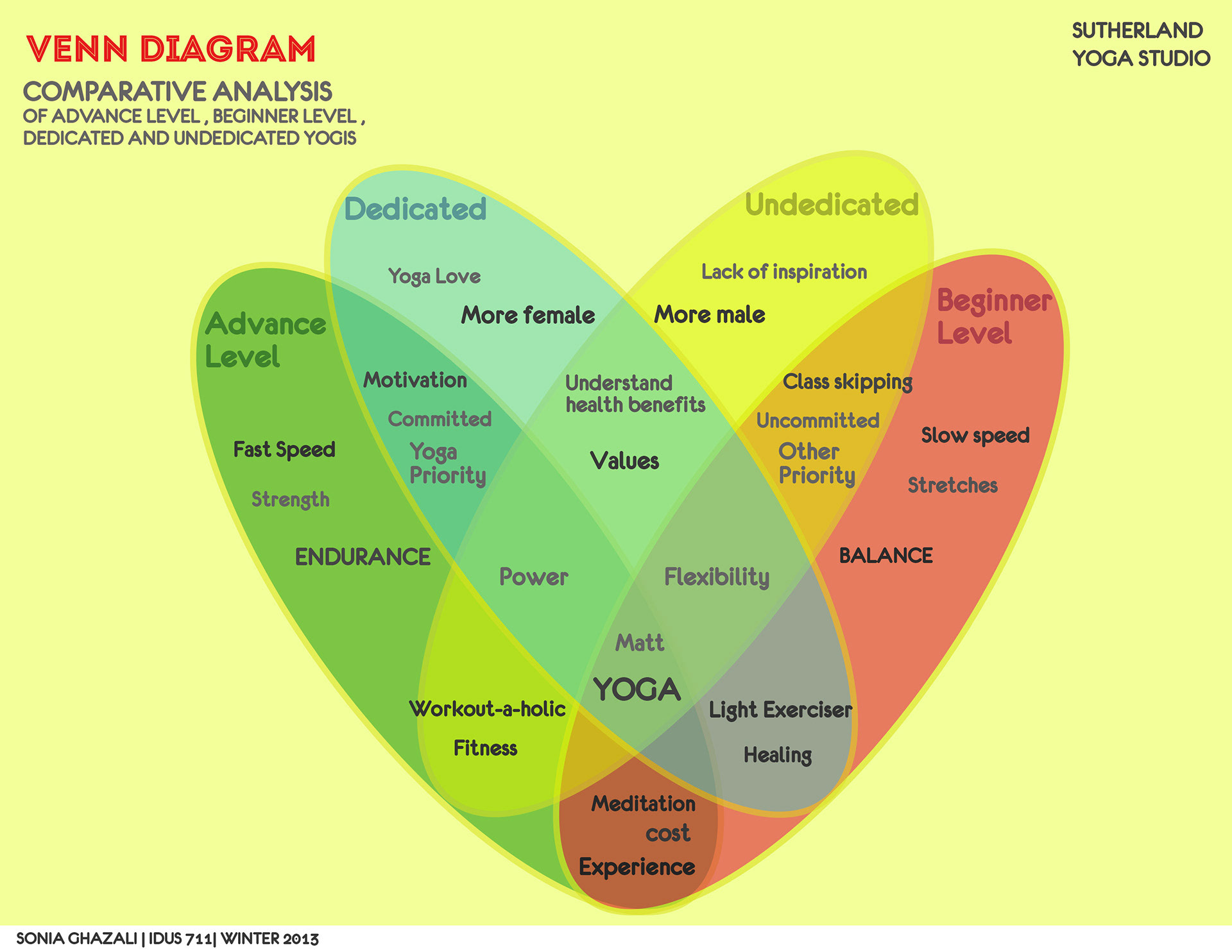
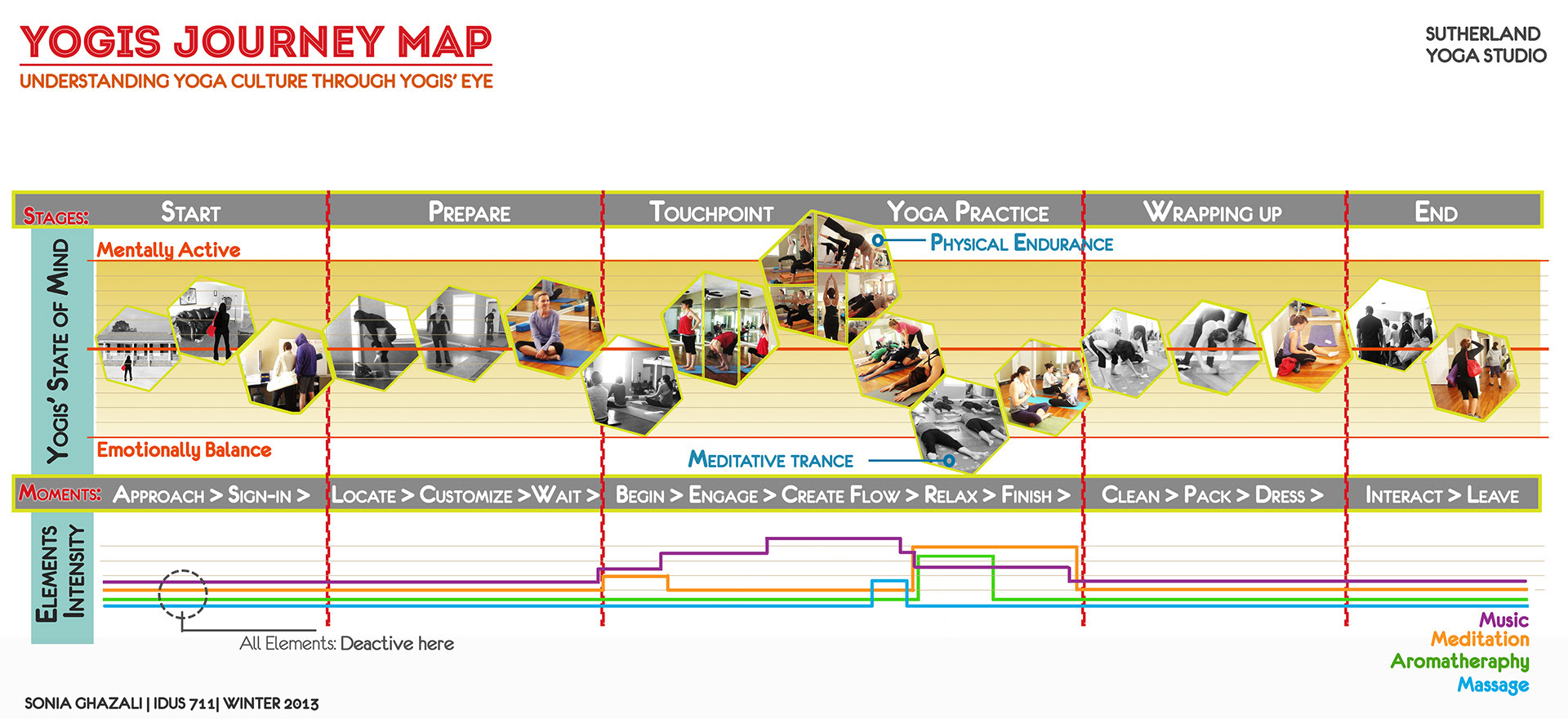

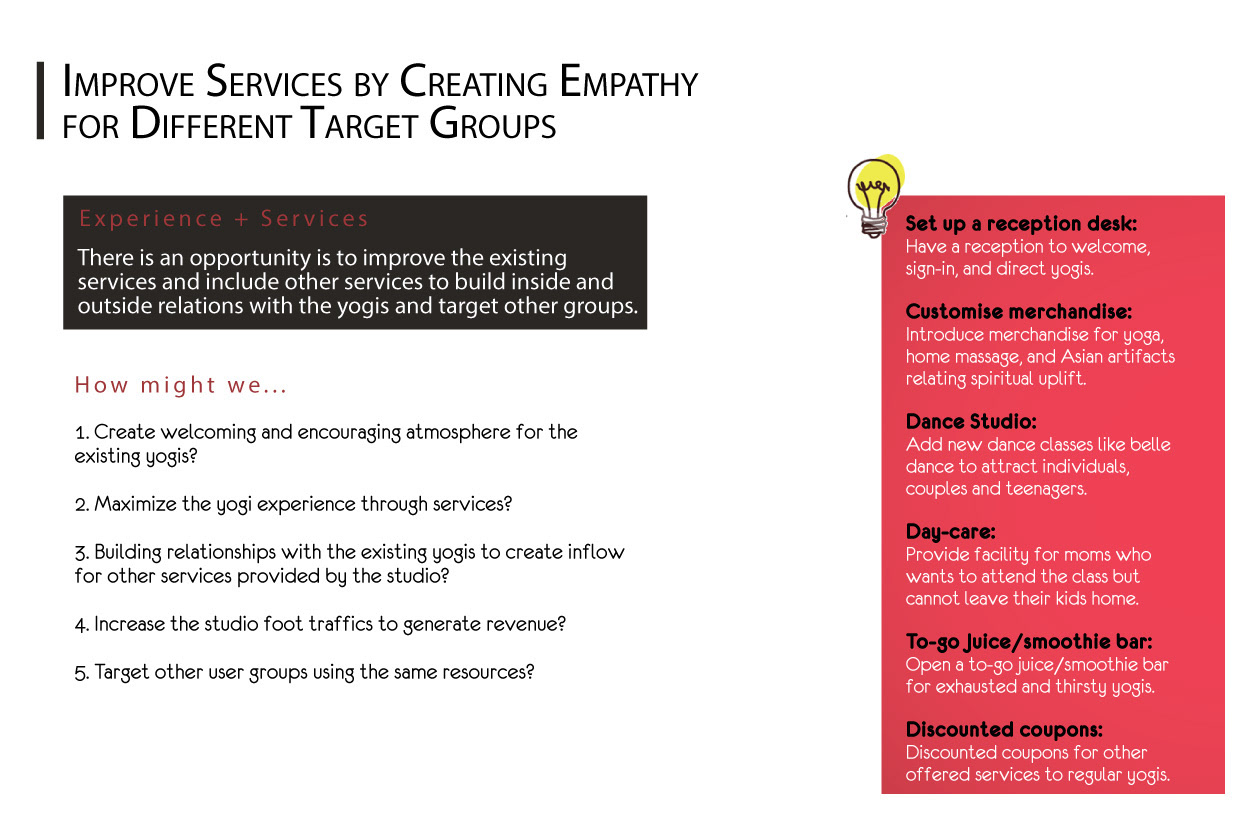
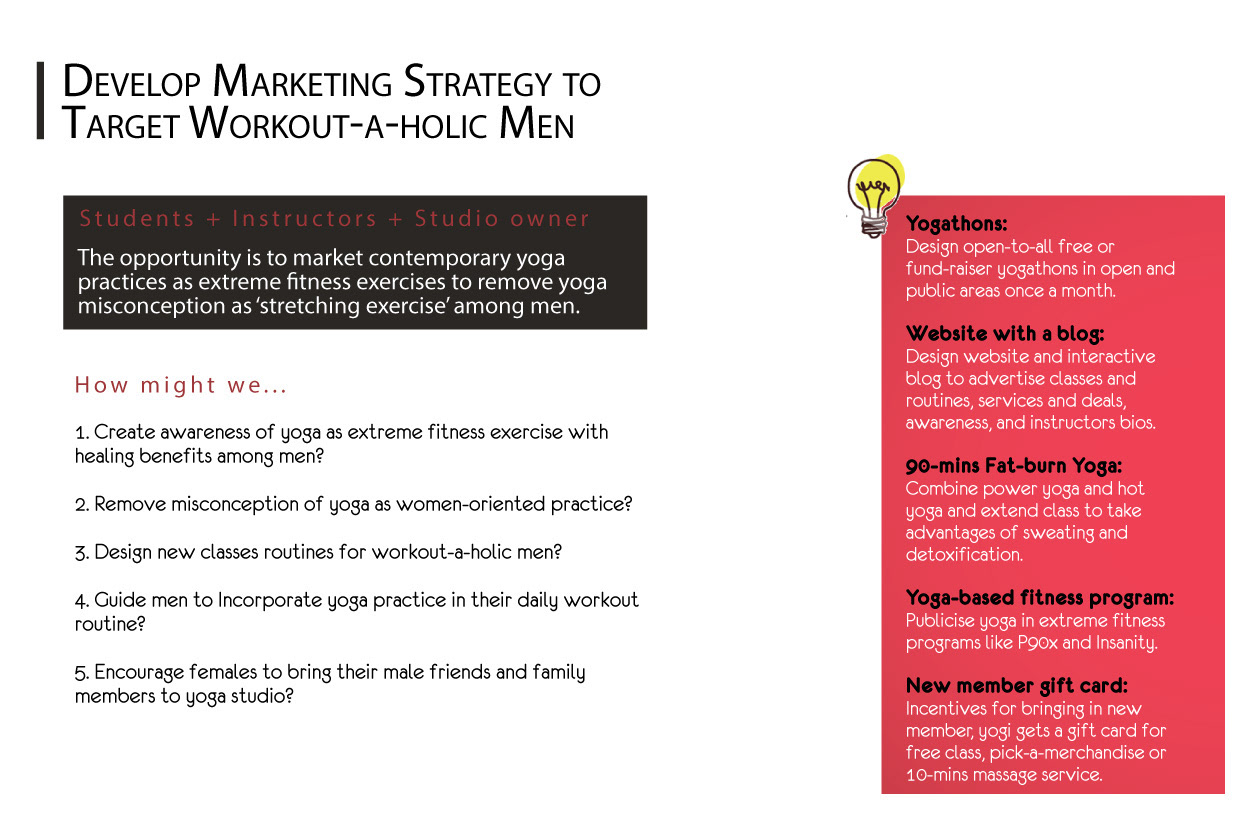
Impact & Business Value
✅ Enhanced Customer Retention & Experience: Insights led to better onboarding strategies, personalized Yoga plans, and improved studio ambiance.
✅ Data-Driven Business Growth: Studio owners gained actionable insights to refine their offerings, pricing, and member engagement strategies.
✅ Improved Studio Design & Operations: Research identified environmental factors that affect user comfort and satisfaction, leading to optimized lighting, acoustics, and spatial design.
✅ More Targeted Marketing & Community Building: Insights helped tailor marketing campaigns to attract and retain different types of Yoga practitioners.
✅ Data-Driven Business Growth: Studio owners gained actionable insights to refine their offerings, pricing, and member engagement strategies.
✅ Improved Studio Design & Operations: Research identified environmental factors that affect user comfort and satisfaction, leading to optimized lighting, acoustics, and spatial design.
✅ More Targeted Marketing & Community Building: Insights helped tailor marketing campaigns to attract and retain different types of Yoga practitioners.
By applying contextual research and human-centered design thinking, Yoga studios can elevate customer experience, strengthen business operations, and drive long-term growth.
Key Learnings in Service Design Strategy
✅ Experience-Driven Design Enhances Business Success: Whether a physical studio or digital product, understanding user behavior is key to retention and engagement.
✅ Human-Centered Research Uncovers Hidden Needs: Traditional surveys miss emotional and experiential insights—contextual observation reveals deeper pain points and motivations.
✅ Personalization Strengthens Customer Loyalty: Businesses can increase retention and value perception by segmenting user journeys.
✅ Space & Environment Shape User Behavior: Like UI/UX design in digital products, physical space impacts how customers interact and engage—whether in a Yoga studio or an app.
✅ Data-Backed Decisions Drive Growth: Applying research insights to product strategy ensures optimized business models and higher user satisfaction.
By leveraging contextual research, product strategy, and experience design, Yoga studios can transform into high-retention, customer-driven wellness spaces that align with evolving consumer expectations.





